Ways of Reading is a well-established core textbook that provides the reader with the tools to analyse and interpret the meanings of literary and non-literary texts.
This third edition has been substantially revised and redesigned throughout with many fresh examples and exercises. References have been updated, the overall organization of the book has changed and new material has been added to include information on electronic sources and the Internet, plus a completely new unit: Ways of Reading drama analyses plays as a dramatic performance and a dramatic text.
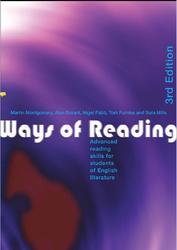
Comprehension and interpretive variation.
The ways of reading indicated here are without doubt kinds of comprehension. But they show comprehension to consist not just of passive assimilation but of active engagement in inference and problem-solving. You infer information you feel the writer has invited you to grasp by presenting you with specific evidence and clues; and you make further inferences, for instance about how the text may be significant to you, or about its plausibility - inferences that form the basis of a personal response for which the author will inevitably be far less responsible.
Conceived in this way. comprehension will not follow exactly the same track for each reader. What is in question is not the retrieval of an absolute, fixed or ‘true’ meaning that can be read off and checked for accuracy, or some timeless relation of the text to the world. Rather, we ascribe meanings to texts on the basis of interaction between what we might call textual and contextual material: between kinds of organization or patterning we perceive in a text’s formal structures (so especially its language structures) and various kinds of background, social knowledge, belief and attitude that we bring to the text.
Contents.
Notes on contributors.
Preface.
Acknowledgements.
Introduction.
Section 1 Basic techniques and problem-solving.
1 Asking questions as a way into reading.
2 Using information sources.
3 Analysing units of structure.
4 Recognizing genre.
Section 2 Language variation.
5 Language and time.
6 Language and place.
7 Language and context: register.
8 Language and gender.
9 Language and society.
Section 3 Attributing meaning.
10 Metaphor and figurative language.
11 Irony.
12 Juxtaposition.
13 Intertextuality and allusion.
14 Authorship and intention.
15 Positioning the reader or spectator.
Section 4 Poetic form.
16 Rhyme and sound patterning.
17 Verse, metre and rhythm.
18 Parallelism.
19 Deviation.
Section 5 Narrative.
20 Narrative.
21 Narrative point of view.
22 Speech and narration.
23 Narrative realism.
Section 6 Media: from text to performance.
24 Film and prose fiction.
25 Ways of reading drama.
26 Literature in performance.
Appendix: notes on activities.
Glossary.
References .
General index .
Index of texts discussed.
Бесплатно скачать электронную книгу в удобном формате, смотреть и читать:
Скачать книгу Ways of Reading, Advanced reading skills for students of English literature, Montgomery M., Durant A., Fabb N., Furniss T., 2007 - fileskachat.com, быстрое и бесплатное скачивание.
Скачать pdf
Ниже можно купить эту книгу, если она есть в продаже, и похожие книги по лучшей цене со скидкой с доставкой по всей России.Купить книги
Скачать - pdf - Яндекс.Диск.
Дата публикации:
Теги: учебник по английскому языку :: английский язык :: Montgomery :: Durant :: Fabb :: Furniss
Смотрите также учебники, книги и учебные материалы:
Следующие учебники и книги:
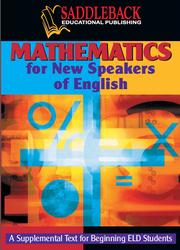 Mathematics for New Speakers of English — Фрагмент из книги: Most mathematics books have many story problems. They have many kinds on the same page. Sometimes you … Книги по английскому языку
Mathematics for New Speakers of English — Фрагмент из книги: Most mathematics books have many story problems. They have many kinds on the same page. Sometimes you … Книги по английскому языку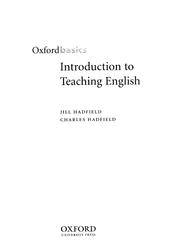 Introduction to Teaching English, Hadfield J. — This book is for teachers who are learning to teach English either on an initial teacher training course, or beginning … Книги по английскому языку
Introduction to Teaching English, Hadfield J. — This book is for teachers who are learning to teach English either on an initial teacher training course, or beginning … Книги по английскому языку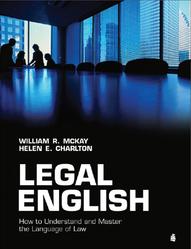 Legal English, How to Understand and Master the Language of Law, McKay W.R., Charlton H.E., 2005 — In this way this publication offers the reader stimulating and enjoyable instruction designed to progressively enhance relevant and meaningful communication … Книги по английскому языку
Legal English, How to Understand and Master the Language of Law, McKay W.R., Charlton H.E., 2005 — In this way this publication offers the reader stimulating and enjoyable instruction designed to progressively enhance relevant and meaningful communication … Книги по английскому языку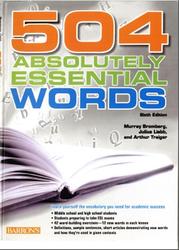 504 absolutely essential words, Bromberg M., Liebb J., Traiger A., 2012 — This is a self-help book. If you use it intelligently, you will help yourself to strengthen and expand your word … Книги по английскому языку
504 absolutely essential words, Bromberg M., Liebb J., Traiger A., 2012 — This is a self-help book. If you use it intelligently, you will help yourself to strengthen and expand your word … Книги по английскому языку
Предыдущие статьи:
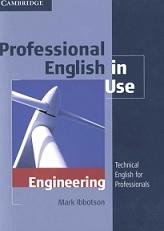 Professional English in Use Engineering, Ibbotson M., 2009 — How is the book organized? The book has 45 units which are grouped into nine themes. Each theme covers an … Книги по английскому языку
Professional English in Use Engineering, Ibbotson M., 2009 — How is the book organized? The book has 45 units which are grouped into nine themes. Each theme covers an … Книги по английскому языку 1000 самых нужных слов, разговорник, еда и напитки, английский язык, 2013 — Предисловие. Вы не только любите ходить по ресторанам, но еще и с удовольствием готовите дома? Вы хотите узнать, что же … Книги по английскому языку
1000 самых нужных слов, разговорник, еда и напитки, английский язык, 2013 — Предисловие. Вы не только любите ходить по ресторанам, но еще и с удовольствием готовите дома? Вы хотите узнать, что же … Книги по английскому языку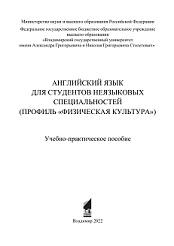 Английский язык для студентов неязыковых специальностей, профиль «Физическая культура», Датчук Н.Ю., 2022 — Английский язык для студентов неязыковых специальностей (профиль Физическая культура ), Датчук Н.Ю., 2022. Цель учебно-практического пособия - формирование навыков работы … Книги по английскому языку
Английский язык для студентов неязыковых специальностей, профиль «Физическая культура», Датчук Н.Ю., 2022 — Английский язык для студентов неязыковых специальностей (профиль Физическая культура ), Датчук Н.Ю., 2022. Цель учебно-практического пособия - формирование навыков работы … Книги по английскому языку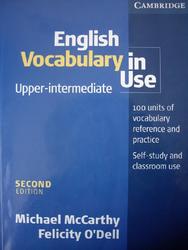 English Vocabulary in Use, Upper-Intermediate, Michael McCarthy, Filicity O Dell, 2005 — English Vocabulary in Use Upper-intermediate is primarily designed as a self-study reference and practice vocabulary book but it can also … Книги по английскому языку
English Vocabulary in Use, Upper-Intermediate, Michael McCarthy, Filicity O Dell, 2005 — English Vocabulary in Use Upper-intermediate is primarily designed as a self-study reference and practice vocabulary book but it can also … Книги по английскому языку




